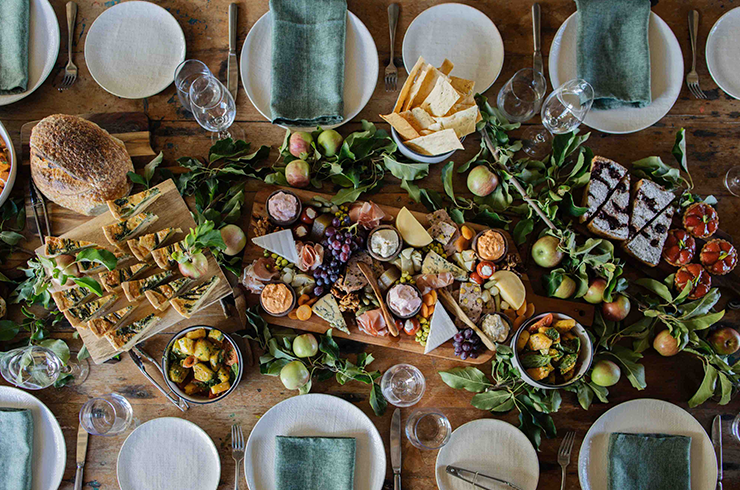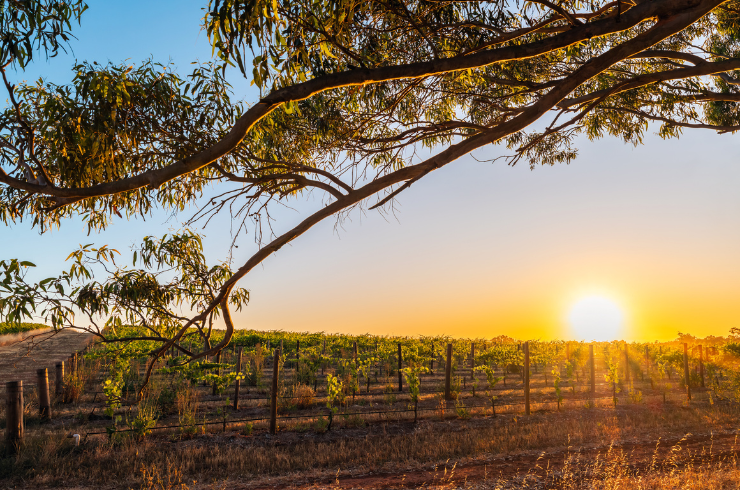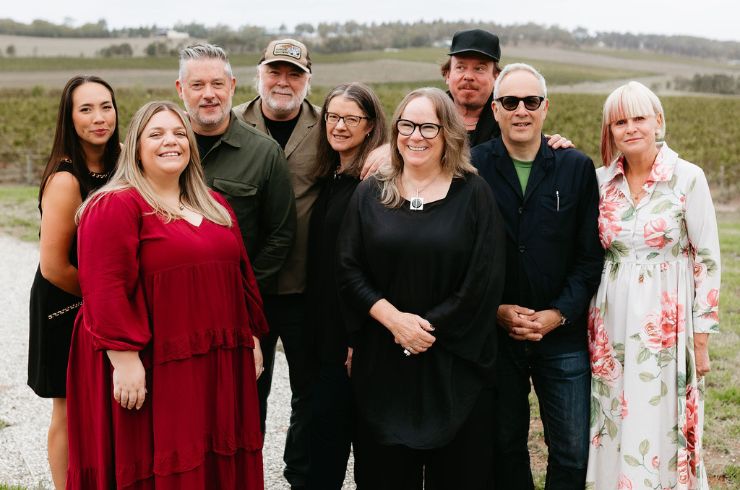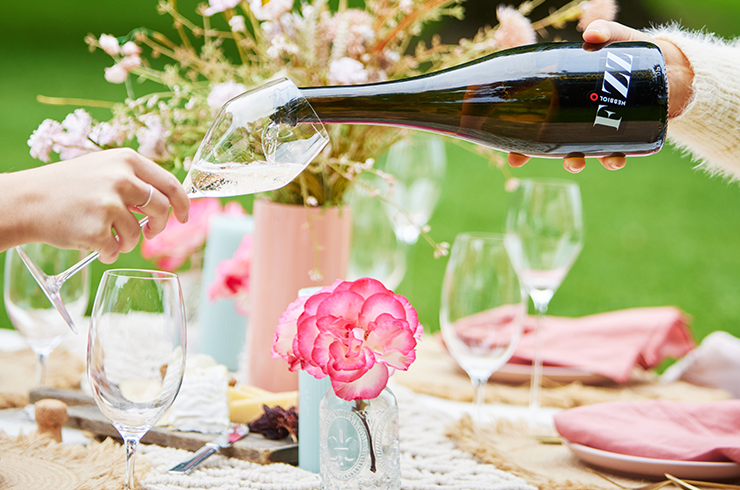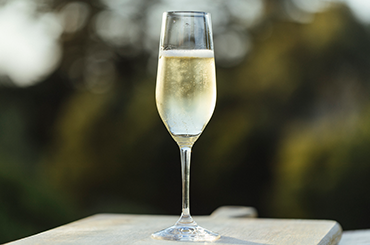- These winemakers and vignerons are championing Australian sparkling wine, showcasing their modern interpretations of traditional methods. We ask them how, when and why they fell in love with the style.
-
Sidewood Estate, Hahndorf, SA
Located just a short drive east of Adelaide in the Onkaparinga Valley, Sidewood Estate is a producer of premium cool-climate wines. Sidewood is a Halliday Five Red Star winery, and the largest eco-sustainable winery in the Adelaide Hills. -
Azahara Wines, Mildura, VIC
Azahara is Spanish for orange blossom and symbolises the location of Azahara’s estate vineyards, interspersed with citrus, mango and avocado groves. Azahara’s sparkling styles are bright and fresh, and best paired with foods of a similar nature. -
Clover Hill, Lebrina, TAS
A cool maritime climate, ancient volcanic soils and a sheltered amphitheatre make the perfect setting for Clover Hill’s vines. Producing wines of pedigree due to its ideal location, the winery aims to blend the traditional method with its own distinguished Tasmanian style. -
Coombe Yarra Valley, VIC
Grown in one of Victoria’s most celebrated winemaking regions, Coombe Yarra Valley's wines are a reflection of the region’s distinct terroir. This winery’s traditional-style sparkling wines are particularly successful, handcrafted in small volumes and from the best fruit of the vintage. -
Voyager Estate, Margaret River, WA
A meticulous approach is at the heart of Voyager Estate’s winemaking. Small-batch fermentation and sensitive handling of fruit allow the wines to display characteristics of the Margaret River region. The winery produces an elegant, balanced and subtle product with a real sense of place.

Winemaker Darryl Catlin
Q: What’s special about Australian sparkling wine?
A: “We have some of the coldest vineyards in the Adelaide Hills, an essential element of making high-quality Australian sparkling wine. It’s important to remember that we cannot attempt to create nor copy Champagne. The unique part about making sparkling is handcrafting a great base wine and making educated projections about how that will develop in the bottle over time.”
Q: How is this style best enjoyed?
A: “Australians often under-appreciate the versatility of sparkling wine for food pairing, opting instead to drink it as an aperitif. Sparkling wines can be enjoyed with food and matched to the meals you normally would with chardonnay and pinot noir. And throw out the traditional Champagne flutes – enjoy sparkling in wine glasses or tulips.”
Find out more.

Winemaker Frank Newman
Q: Why do you love this style?
A: “Sparkling wine rewards the senses of sight, smell and taste, but is unique in also satisfying the sense of sound. There is nothing like opening a bottle and hearing that ‘pop’. My first encounter with sparkling was a taste of Mum’s Babycham at Christmas in the 60s. [Since then] I have learnt it is the most social of drinks, but it can also be the most technically challenging wine to make.”
Q: How is it best enjoyed?
A: “Our Azahara Sparkling Rosé is dry, lean and zesty, and can be enjoyed anytime. With a breakfast of freshly shucked oysters, friends and a sea view would be my preference. But as long as the glasses are clean, and the wine is chilled to between 6 and 8°C, you can enjoy it whenever and however you like!”
Find out more.

Winemaker Robert Heywood
Q: What differentiates Australian sparkling from French Champagne?
A: “Australia has less variation in growing seasons compared to Champagne. This environment allows us to produce a far higher percentage of vintage sparklings than our northern hemisphere counterpart, which is a true representation of quality. I don’t think we have to differentiate ourselves from Champagne – we just need to taste blind, look at the price and come to our own conclusions.”
Q: Why do you love making sparkling wine?
A: “Making sparkling wine is a process of trust – trust in what you know the wine is capable of and how it will evolve on yeast lees with age. It is rewarding to look back and remember the harvest of a wine that has been ageing on lees and realise it has reached the potential you envisaged when you put it into bottle seven-odd years ago.”
Find out more.

Wine business manager Matt Talbot
Q: What do you love about sparkling wine?
A: “As a former sommelier, I’ve always thought of sparkling as an occasion wine. I love the ceremony of popping a cork – it’s a symbol of celebration and good times. The style lends itself exceptionally well to food pairing, and there is something so gratifying in seeing a wine’s evolution after four years of ageing in bottle.”
Q: How do you approach the winemaking of this style?
A: “Being a blanc de blancs and made from 100 per cent chardonnay, it naturally reflects the characteristics of the vineyard. Therefore, we strive to retain this purity and freshness of fruit, while still seeing that generous mouthfeel and complexity from time in bottle. The making of this wine begins in the vineyard – pruning, shoot and crop thinning are done to keep our yields low. It’s all about single-site expression, minimal handling and allowing the site to speak for itself.”
Find out more.
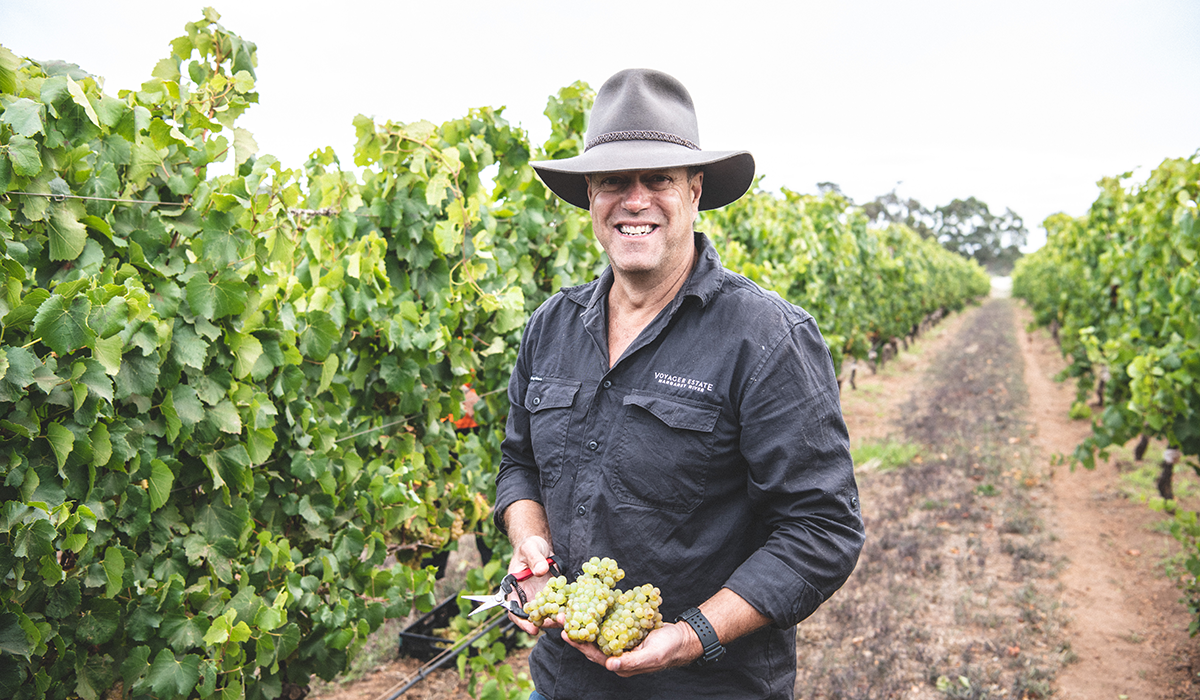
Head of viticulture and winemaking, Steve James
Q: Tell us about your winemaking process.
A: “Hand-harvested parcels of Voyager Estate chenin blanc fruit are gently whole-bunch pressed to minimise any phenolics. Cool-fermentation in stainless steel tanks preserves fresh fruit aromatics and flavours. The wine is fined, filtered, and tirage bottled with secondary fermentation occurring in the bottle. The wine remains on lees for six months to gain additional complexity and a fine bead.”
Q: Has your winemaking processed evolved or changed in any way?
A: “The main evolution in sparkling wine for us at Voyager Estate was moving from using chardonnay to chenin blanc, which makes a far superior sparkling wine from our vineyard site. Chenin blanc has a perfect sugar/acid balance at low baume, and the flavours of citrus and green apple are perfect for making a delicious end product. A lot of our focus at Voyager starts in the vineyard – we don’t allow the fruit to be sun-exposed and maintain a healthy vine canopy, essential to capturing freshness and vibrancy in the wine.”
-
Hollydene Estate, Hunter Valley, NSW
Hollydene began as the passion project of owner Karen Williams. After supplying grapes to Arrowfield Estate Wines for several years and making small batches of her own wine from the yield, Karen sold her property in 2010 to purchase what was to become Hollydene Estate. Now established with over 12 varieties on offer, Hollydene Estate is known for its awarded, bright and refined sparkling wines.
Find out more.
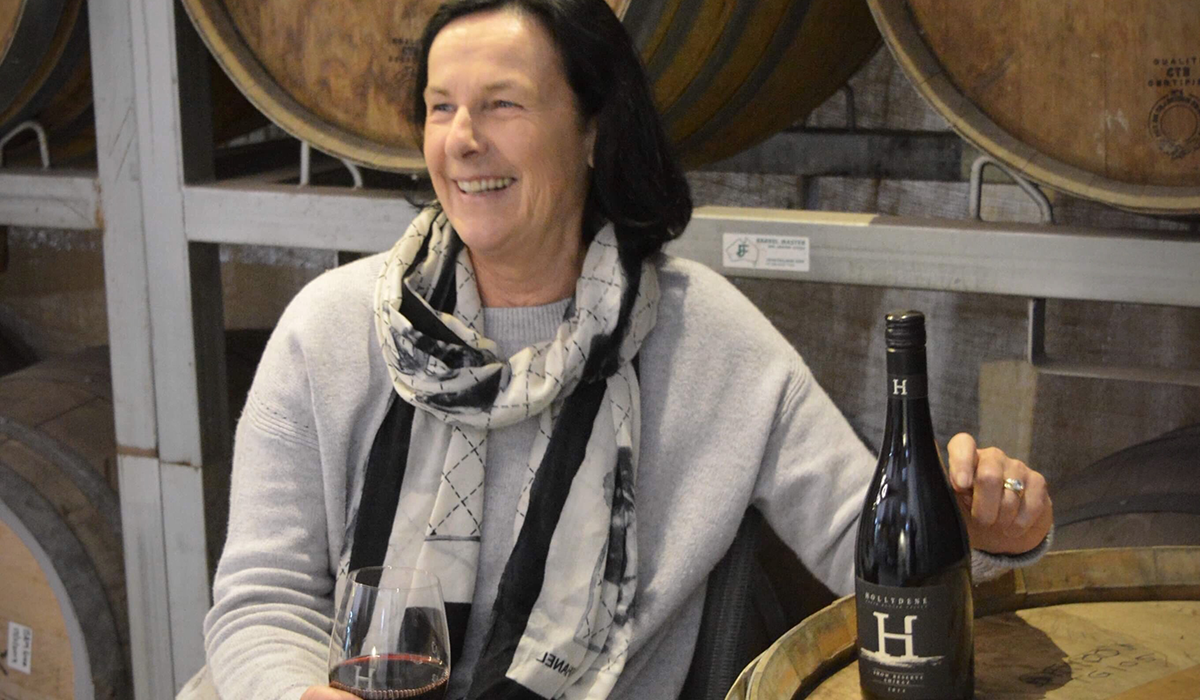
Owner Karen Williams
Q: What was the inspiration for this wine?
A: “Sparkling is a much-needed luxury item on any wine list, and being based in the Upper Hunter, we felt it important to expand our existing varieties to include it. We use Victorian producers Kilchurn Wines to help source and produce our award-winning product. Their Mornington Peninsula chardonnay base presents a delicate and balanced acidity.”
Q: What’s special about Hollydene’s style?
A: “Our Hollydene Blanc de Blancs has just won Best Sparkling in Australia for the second year in a row at the 2019 Australian Sparkling Wine Show. We have been using the same base wine that is currently undergoing its second-bottle fermentation stage, and our preferred style is traditional method, which allows for long ageing on lees before being disgorged. This wine is at its best chilled, served as a hunger-inducing aperitif. But by no means is that how it should exclusively be enjoyed – it pairs perfectly whenever the mood hits, especially with some fresh, natural oysters.”
Find out more.
*This article was produced by Halliday Wine Companion in partnership with the featured wineries.
Latest Articles
-
Win
Win a stunning collection of Plumm glassware and wine, valued at over $500
1 day ago -
Wine Lists
Top Christmas wines under $30 (and five worth splurging on)
1 day ago -
Wine Lists
Why you should drink Australian this festive season (and 80 of our best wines to try)
1 day ago -
From the tasting team
The Aussie wines the Halliday Tasting Team will be opening this festive season
1 day ago

